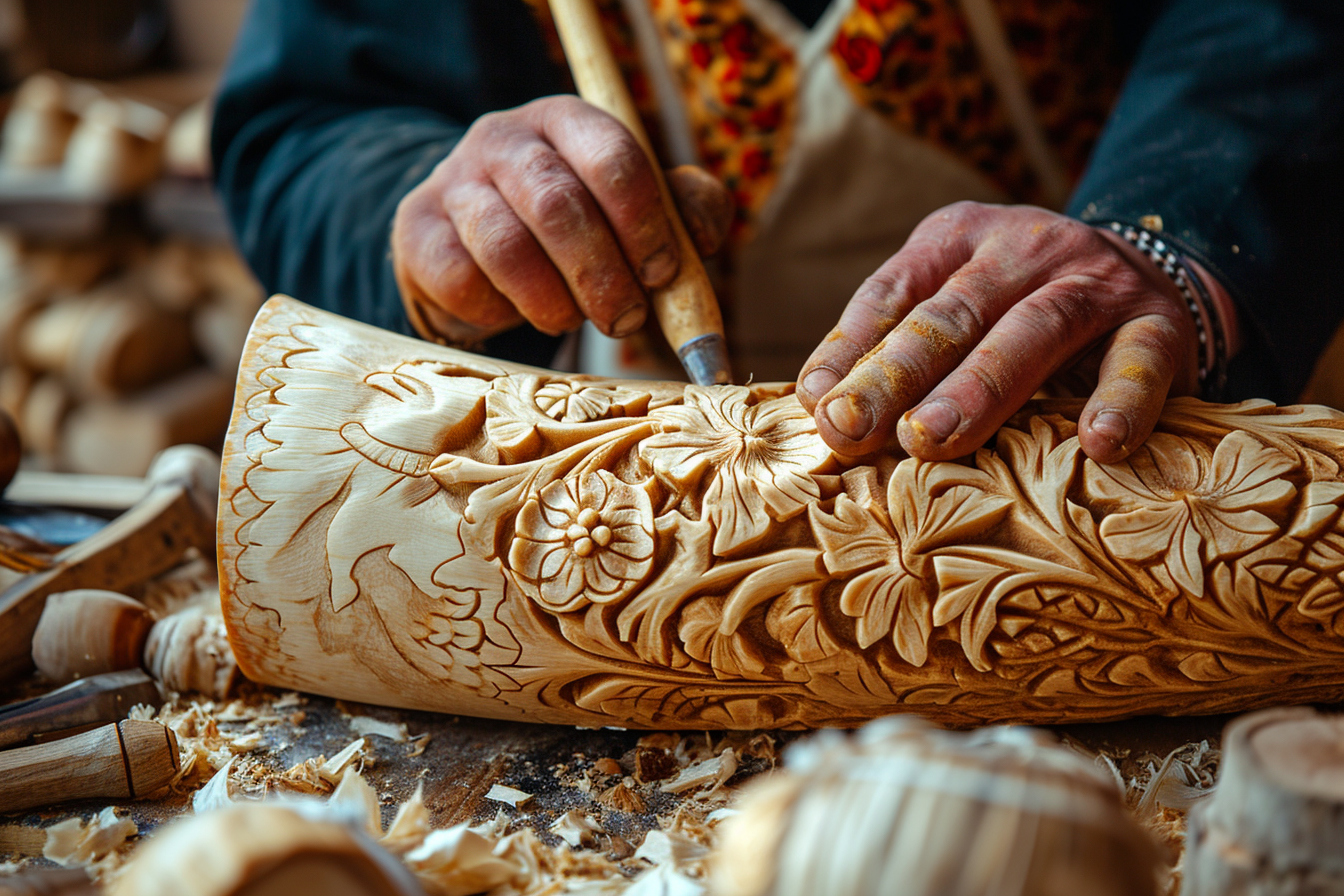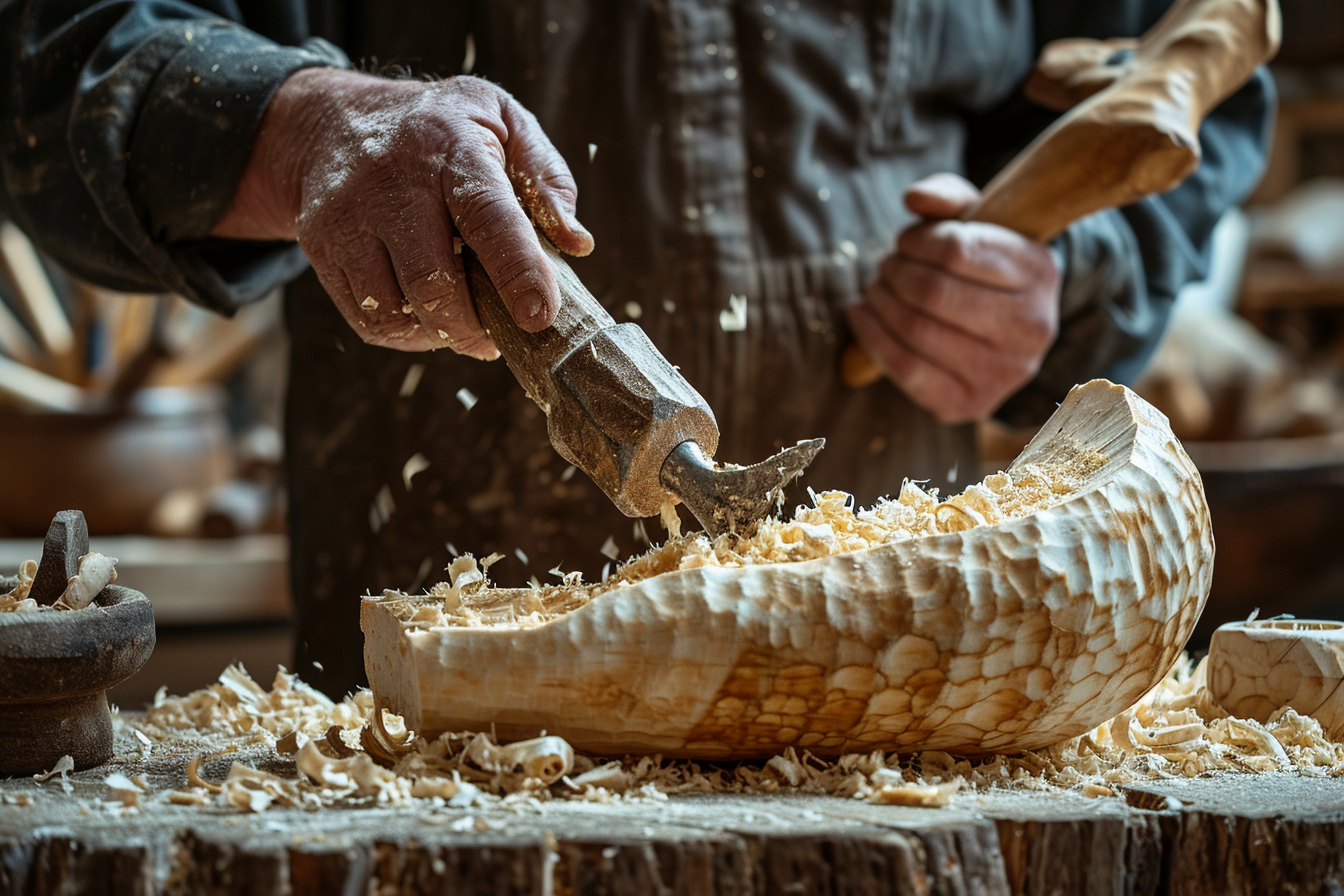Carving horn, a timeless form of art, has been practiced for centuries across various cultures and regions of the world. The intricate process of shaping and etching animal horns into beautiful objects and designs is not only a means of artistic expression but also represents a connection to history and tradition. In-depth learning and practice can empower enthusiasts to preserve this ancient craft. In this extensive overview, we will delve into the methodologies, skills, and knowledge required to master horn carving.
Understanding the medium: horn properties and preparation
The Essence of Horns
Horns are essentially composed of keratin, the same protein found in human nails and hair. This organic material is both durable and plastic, and it can be heated and molded, carved, or even pressed into finely detailed shapes. The horns of different animals—such as buffalo, cows, and rams—offer varied textures, sizes, and colors, providing a plethora of artistic possibilities.
Selection of high-quality horns
Quality is paramount when selecting horns for carving. Seek out horns with minimal surface imperfections, as these can affect the final appearance and structural integrity of the carved object. Remember, horns with a uniform consistency provide a solid canvas for your creative endeavors.
Preparing the horn for carving
Before the actual carving begins, horns must be prepared properly. Cleaning the exterior to remove any dirt or debris is the initial step. Then, the horn is softened using heat to enable shaping and carving. It is often boiled or soaked in warm water to achieve this pliability. Once the horn is moldable, it can be straightened or bent into a desired basic form. Throughout this process, careful attention to the horn’s response to heat is essential to avoid scorching or over-softening, which could render the material unusable.
Essential tools for horn carving
To carve horn masterfully, one requires specific tools tailored to work with the material’s unique properties.
Carving knives
Durable and sharp carving knives are essential for detailed work. Specialized horn carving knives often feature curved blades to facilitate the intricate cuts that define high-quality craftsmanship.
Chisels and gouges
A variety of chisels and gouges are necessary to scoop out material, create texture, and define shapes. Gouges with different profiles allow for a vast range of carving techniques.
Sanders and grinders
Power sanders and grinders accelerate the shaping process and enable the carver to achieve a smooth surface on the horn. These tools demand caution and skill, as overly aggressive grinding can damage the horn.
Fine finishing tools
Files, rasps, and grades of sandpaper play a vital role in the final stages of horn carving, allowing for precise adjustments and a polished finish.
Techniques and approaches to horn carving

The act of carving horn involves much more than simply removing material; it requires a thoughtful approach and a precise application of various techniques.
Design and planning
Before the horn touches the blade, a well-thought-out design plan is drafted. One should consider the horn’s natural contours and how they can be integrated into or complement the final design. Templates or sketches can guide the carving process, ensuring that the vision for the piece is maintained.
Carving in stages
Horn carving typically progresses in stages, starting with the rough shaping of the outer form. Subsequent stages involve more refined shaping and detail work. Patience is a virtue in this multi-step process.
Adept use of carving tools
Master horn carvers exhibit a deep understanding of how different tools interact with the horn material. They use a combination of power tools for gross shaping and hand tools for fine details, knowing when and how to use each to its full potential.
Texturing and detailing
Towards the final stages of carving, detailing becomes paramount. Techniques like cross-hatching, stippling, or delicate incising can create rich textures and depth that bring the carved object to life.
Finishing techniques
The concluding touches enhance the visual appeal of a horn carving. They are crucial in transforming a rough piece into a polished work of art.
Smoothing and polishing
After carving is completed, sanding begins with coarse grits and progressively moves to finer grits to achieve a silky-smooth surface. Polishing with a cloth or a buffing wheel can then give the horn a lustrous sheen.
Staining and coloring
While many horn carvings display the natural color of the horn, staining or painting can be employed to add vibrancy or contrast. It is a way to accentuate details or add visual interest to the finished piece.
sealing
To protect the horn and maintain its beauty, a sealant — often a wax or oil — is applied. Not only does this provide a protective layer, but it also deepens the horn’s natural color and enhances its innate patterns.
Learning resources and practice
To become proficient at horn carving, embracing a myriad of learning resources is necessary. Workshops, online tutorials, books, and apprenticeship with experienced carvers can all provide invaluable knowledge and help refine technique. Yet, the most critical aspect of learning is consistent practice. Through trial and error, the unique properties of horn become familiar, and the hand becomes steady and precise in its movements.
Health and safety considerations

Working with horn involves several health and safety considerations. Carvers should be conscientious about proper ventilation due to the potentially harmful dust and fumes produced during carving. Personal protective equipment such as gloves, dust masks, and eye protection is non-negotiable to ensure a safe carving environment.
Ethical and sustainable practices
With any craft involving animal products, ethical acquisition and sustainability are topics of importance. Horn carving should be approached with respect for the animals and with adherence to regulations governing horn sourcing. Using byproducts from animals that were harvested for other purposes, such as food, is one way to practice horn carving sustainably and ethically.
Community and cultural appreciation
Joining a community of horn carvers can be a source of support, inspiration, and growth. Strong communities encourage the sharing of techniques, experiences, and constructive feedback. Additionally, acknowledging the cultural significance of horn carving and its history is vital. Many carvers dedicate time to study the craft’s past, drawing inspiration from traditional designs and contributing to the preservation of cultural heritage.
The journey continues
The path to mastering horn carving is a continuous one, marked by an ever-evolving skill set and deepening understanding of the craft. With each piece carved, new insights are gained, and the boundless potential of horn as a medium for artistic expression is further revealed. As the carver hones their craft, the unlimited possibilities of horn carving become more apparent, propelling them forward in their artistic journey.
This comprehensive overview aims to provide the fundamental knowledge and insight required for anyone interested in learning the craft of horn carving. It encourages aspiring carvers to immerse themselves in the nuances of the medium, the preciseness of the techniques, the beauty of the finished works, and the deep satisfaction that comes from mastering an ancient and revered form of art. As you embark on or continue your journey in horn carving, the craft’s intricacies will lead you to an ever-expanding horizon of creativity and skill.
